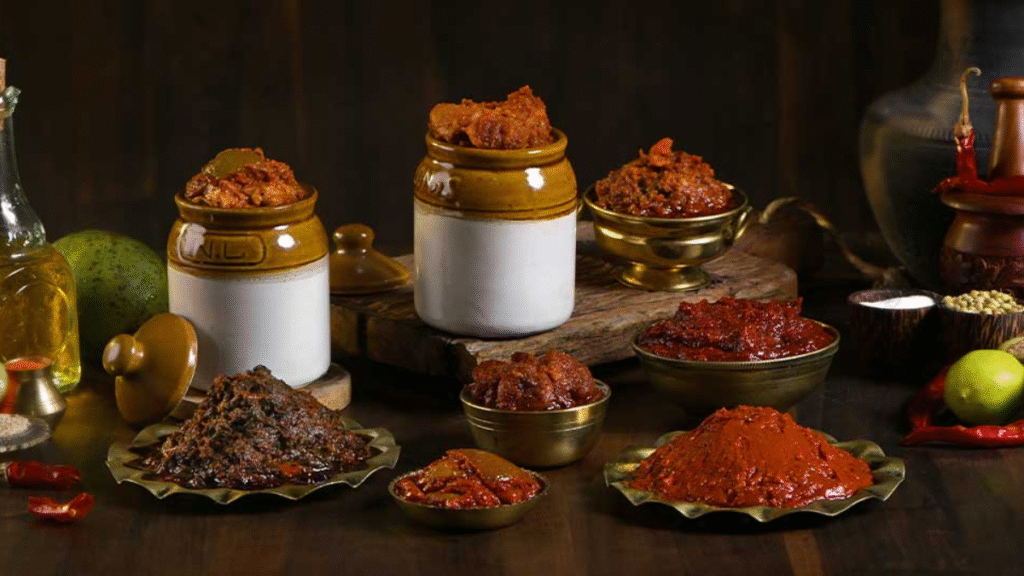
Pickles, or “Achaar” as we fondly call them in India, are more than just condiments. They are memories stored in jars, traditions passed down through generations, and a burst of flavors that make every Indian meal complete. The history of pickles in India is as rich and diverse as the country itself—spanning centuries of culture, trade, and culinary innovation.
🌿 Ancient Roots of Pickling in India
The art of pickling dates back over 4,000 years, with references found in ancient Indian texts and Ayurvedic traditions. Pickling was not just about taste—it was a way of preserving seasonal fruits and vegetables in brine, oil, or vinegar to enjoy them throughout the year.
In fact, the Sanskrit word “Achar” comes from “Acharana”, meaning “to preserve.” Our ancestors discovered that adding salt, spices, and oil not only enhanced flavors but also acted as natural preservatives.
🚢 Pickles and the Spice Route
India’s pickles became popular worldwide during the days of the Spice Route. Traders carried jars of Indian pickles across seas because they lasted long and added flavor to bland meals on voyages. From mango and lemon to exotic spice blends, Indian pickles showcased the subcontinent’s mastery over spices.
🍋 Regional Pickle Traditions
What makes Indian pickles extraordinary is the regional diversity:
North India – Famous for spicy mango, red chili, and “stuffed” pickles often preserved in mustard oil.
South India – Known for tangy tamarind, gongura, and fiery chili pickles with sesame oil.
East India – Prefers mustard-based pickles, often lighter yet full of punch.
West India – Gujarat and Rajasthan shine with sweet-sour mango chhunda and ker-sangri pickles.
Each region brings its own technique, oil, and spice mix, making Indian pickles a culinary rainbow of tastes.
🏺 Pickles in Indian Homes
Every Indian household has its own secret recipe—a grandmother’s touch, carefully measured spices, and the ritual of drying fruits under the sun before bottling them with love. Pickle-making is often a family tradition, passed on like an heirloom.
Pickles are not just food—they’re emotions, reminding us of summer vacations, mothers filling ceramic jars, and the aroma of spices filling the air.
🌍 Pickles in the Modern Era
Today, Indian pickles have gone global. With FSSAI-certified brands and export-quality packaging, pickles from India are enjoyed in households across the world. Whether it’s a tangy kathal (jackfruit) pickle or the evergreen mango, the tradition continues—blending heritage with hygiene and quality standards for modern consumers.
✨ Conclusion
The history of pickles in India is a story of preservation, flavor, and culture. From ancient Ayurvedic kitchens to global dining tables, pickles remain an inseparable part of Indian identity. They are not just side dishes but a celebration of taste and tradition—a little jar of India’s soul.
